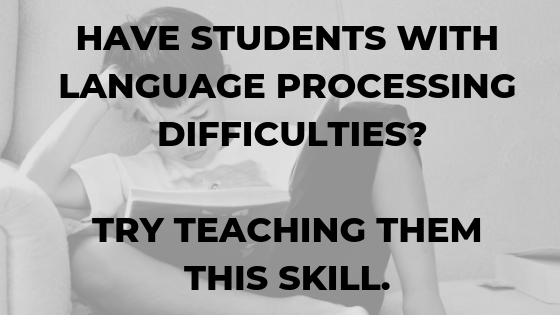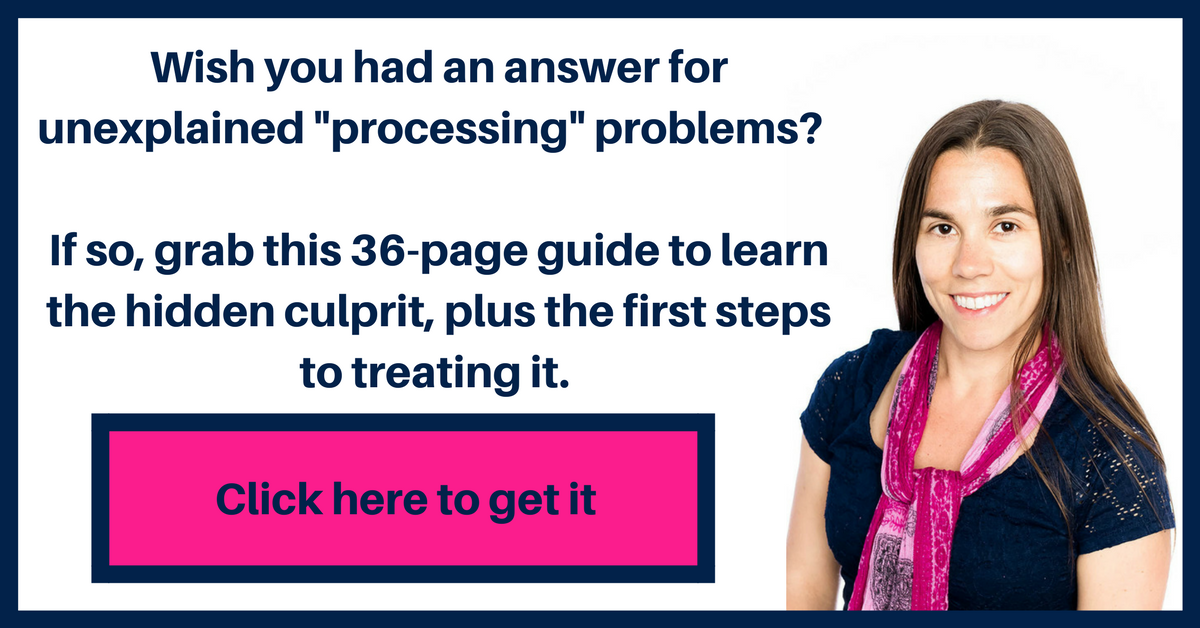We’ve all gotten that dreaded referral for unexplained “language processing” difficulties.
Sometimes it can be hard to know where to start.
The first challenge is knowing what type of screening procedures you should use when you’re deciding if you should evaluate.
Once we’ve evaluated students and they’re on our caseloads we face a different problem: There are about a million different language skills we COULD teach.
How are we supposed to know which ones will give us the biggest bang for our buck? How are we supposed to put it all together in to a neat little set of language goals that we can actually track?
A while back, I answered some of these questions in an article series on writing syntax goals for speech therapy.
Syntax is one of the biggest culprits behind language processing issues.
Many students struggle through school as we teach them general “comprehension” strategies, when they don’t have the underlying language issues to understand difficult sentence types (Scott, 2009).
This can prevent our students from processing what they’re reading, no matter how many strategies we give them to “state the main idea” or answer inferential questions.
But there are so many different types of sentences we could teach, and many of us feel lost when it comes to working on this with our students.
Thankfully Zipoli (2017) gave us a roadmap when he highlighted four sentence types that cause problems for students with language processing difficulties.
In the recording below, I’ve explained the first difficult sentence type: Sentences with passive voice.
You’ll learn:
- One skill you should always consider targeting when a student has language processing difficulties (2:45)
- One sentence type that’s likely to confuse your students (4:40)
- What “active voice” is and why it’s easy for your students to process (5:40)
- What “passive voice” is and why it causes so many issues for students with language processing problems (6:15)
- How to write specific, concise goals for this sentence type that are easy to track; so you can boost the language skills needed for high-level comprehension (8:00)
You can listen to the recording here:
In this recording I mentioned The Ultimate Guide to Syntax Volume 1: Passive Voice; a downloadable guide with over 100 worksheets that will take the guesswork out of teaching passive voice. You can watch a free video tour of this guide here.
The original article can be found here: Syntax Goals for Speech Therapy Part 2: Using Passive Voice.
To learn more about how to create a roadmap for language therapy, check out this free e-book for SLPs.
Inside you’ll learn exactly how to focus your language therapy. Including:
- The hidden culprit behind unexplained “processing problems” that’s often overlooked.
- The deceptively simple way to write language goals; so you’re not spending hours on paperwork (goal bank included).
- The 4 sentence types often behind comprehension and expression issues and why they’re so difficult.
- An easy-to-implement “low-prep” strategy proven to boost sentence structure, comprehension, and written language (conjunctions flashcards included).
References


